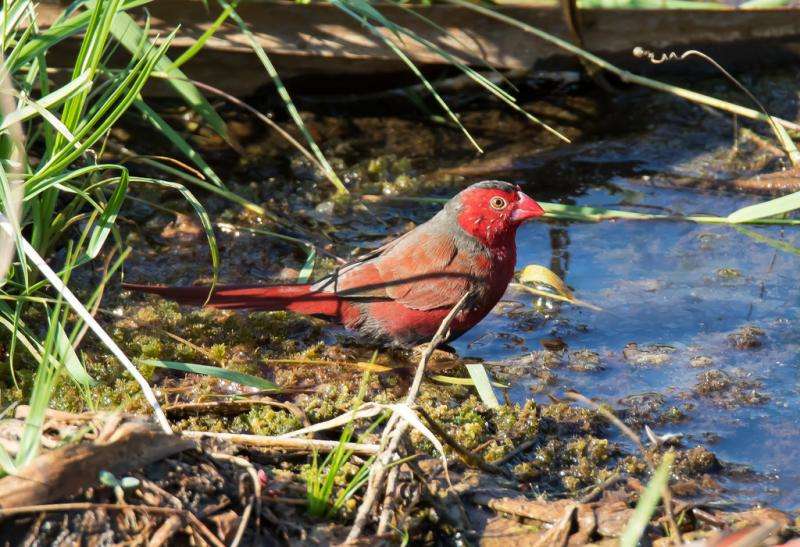One is the crimson finch (Neochmia phaeton) whose population has multiplied from 55 to 88 per cent over a five-year period spanning the toad’s invasion of the Kimberley. Credit: Geoff Whalan
It is difficult to imagine a positive outcome from the spread of the highly destructive cane toad into the Kimberley (Rhinella marinus) but research shows with the toad's spread some animal numbers may be increasing, including an endangered bird species.
American ecologist Sean Doody says in northern Australia three species of monitor lizard are near apex predators, the yellow-spotted monitor (Varanus panoptes), Merten's water monitor (V. mertensi) and Mitchell's water monitor (V. mitchelli).
Recent research has found their numbers have declined dramatically as they prey on the lethally toxic toads, allowing the populations of local animals they feed on to increase in size.
One is the crimson finch (Neochmia phaeton) whose population has multiplied from 55 to 88 per cent over a five-year period spanning the toad's invasion of the Kimberley.
Researchers expect the same trend in other species that are common dining options for the big lizard predators including small mammals, frogs, fish, crustaceans and insects, although they have no specific data.
The prey density research was sparked while in the field in northern Australia on another study researching monitor lizard populations.
"We noticed the crimson finches that were hollering and scolding us as we went by," he says.
The commotion struck Prof Doody as odd considering the finches didn't normally care when they travel past.
But when they went back to investigate they found the finches were really 'scolding' a goanna which was in the bird's nest eating their eggs.
Similar sightings, of lizards preying on bird and other wildlife, prompted the researchers to launch a study of what happened to prey densities when predators were removed.
An honours student did an intensive investigation of the finches, which nest in the low-growing pandanus (Pandanaceae) tree.
They checked one hundred nests every two days, following the birds through to fledgling stage and using cameras on nests to demonstrate the predation rates.
The two studies showed the finch population increased because the two goanna species preying on eggs and fledglings, the monitor lizards V. mitchelli and V. mertensi, had declined by nearly 50 per cent.
"You get these predators dropping out essentially and their prey numbers go up and the prey numbers of those animals goes down and we get all these shifts," Prof Doody says.
"In some systems it can be like that puzzle game where you pull one piece out and you hope the whole thing doesn't fall apart.
Provided by Science Network WA
This article first appeared on ScienceNetwork Western Australia a science news website based at Scitech.
























